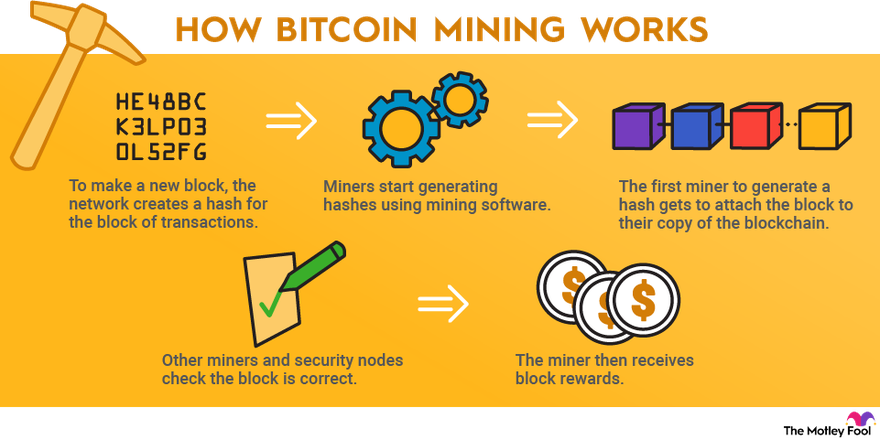Understanding Bitcoin Mining
What is Bitcoin Mining?
Bitcoin mining is the process of validating transactions on the Bitcoin network and adding them to the blockchain. It involves complex mathematical calculations that require substantial computational power. By solving these puzzles, miners help maintain the integrity of the network while earning new bitcoins as a reward.
The Purpose of Bitcoin Mining
The primary purpose of Bitcoin mining is twofold: it secures the network and introduces new bitcoins into circulation. Each time a miner successfully adds a new block to the blockchain, they validate all transactions within that block, ensuring that the same bitcoin isn’t spent twice. This decentralized approach eliminates the need for a central authority, making Bitcoin a robust and secure currency.
The Role of Miners in the Bitcoin Network
Miners act as auditors for the Bitcoin network. They compete to solve cryptographic puzzles, and the first to solve one gets to add the block and receive the associated rewards. This competition not only secures the network but also incentivizes miners to invest in powerful hardware and energy resources.
The Bitcoin Mining Process Explained
How Transactions Are Verified
When a transaction occurs, it is grouped with other transactions into a block. Miners then verify these transactions by checking their validity against the blockchain. Only transactions that meet the network’s criteria are included in the block.
The Role of Hashing in Mining
Hashing is a crucial part of the mining process. Each block contains a unique hash, generated from the transaction data, the previous block’s hash, and a nonce (a random number used once). Miners continuously adjust the nonce to find a hash that meets the network's difficulty target.
The Concept of Proof-of-Work
Bitcoin employs a proof-of-work (PoW) mechanism to ensure that mining requires significant computational effort. This method deters spam and malicious attacks by making it costly to generate new blocks. The first miner to solve the PoW puzzle gets to add the block to the blockchain and receive the reward.
The Mining Reward System
Currently, miners receive a reward of 3.125 bitcoins for each block mined, a figure that halves approximately every four years in an event known as "halving." This mechanism regulates the supply of Bitcoin, ensuring that the total number of bitcoins never exceeds 21 million.
Key Components Required for Bitcoin Mining
Essential Hardware for Mining
To begin mining, you need powerful hardware. The two main types are ASIC miners and GPUs.
ASIC Miners vs. GPUs
- ASIC Miners: These are specialized devices designed solely for mining Bitcoin. They are more efficient and powerful than GPUs but can be expensive.
- GPUs: While graphics processing units can also be used for mining, they are generally less efficient for Bitcoin compared to ASICs. However, they are versatile and can mine various cryptocurrencies.
Best Hardware for Bitcoin Mining in 2024
As of 2024, the Bitmain Antminer S21 Hyd is considered the most profitable mining machine, boasting a hash rate of 335 TH/s. Other notable models include the Canaan Avalon A1266 and MicroBT Whatsminer M50S.
| Mining Hardware | Hashrate | Power Consumption (Watts) | Price (USD) |
|---|---|---|---|
| Bitmain Antminer S21 Hyd | 335 TH/s | 5360 | $4,200 |
| Canaan Avalon A1266 | 130 TH/s | 3250 | $5,499 |
| MicroBT Whatsminer M50S | 126 TH/s | 3276 | $2,999 |
Software and Mining Pools
Mining requires specific software to connect your hardware to the Bitcoin network. Popular options include CGMiner, BFGMiner, and EasyMiner.
Joining a Mining Pool: Benefits and Drawbacks
Joining a mining pool allows miners to combine their computational power, increasing the chances of earning rewards. However, the earnings are shared among all pool members, which can reduce individual profits.
How to Start Mining Bitcoin at Home
Setting Up Your Mining Rig
To mine Bitcoin at home, you’ll need to set up a mining rig. This involves assembling the necessary hardware and installing the mining software.
Choosing the Right Hardware
Selecting the right hardware is crucial. High-performing ASIC miners are recommended for better efficiency and profitability.
Cost Considerations for Home Mining
The cost of setting up a mining operation can be substantial, often exceeding $10,000 for a competitive rig. Additionally, electricity costs can significantly impact profitability.
Configuring Mining Software
Once you have your hardware, you need to configure your mining software to connect to your chosen mining pool and set up your wallet for receiving rewards.
Joining a Mining Pool
Joining a mining pool, such as Slush Pool or Antpool, can enhance your chances of earning rewards. Pools share the workload, making it easier to find blocks.
Environmental Impact of Bitcoin Mining
Energy Consumption and Carbon Footprint
Bitcoin mining is energy-intensive, consuming around 176 terawatt-hours annually, comparable to the energy consumption of entire countries. The reliance on fossil fuels contributes to a significant carbon footprint.
The Debate Over Mining Sustainability
The environmental impact of Bitcoin mining has sparked debates about sustainability. Critics point out the high energy consumption and resulting emissions, while proponents argue that mining can promote renewable energy use.
Potential Solutions for Reducing Environmental Impact
Efforts to mitigate the environmental effects of Bitcoin mining include using renewable energy sources, such as solar or wind power, and adopting more energy-efficient mining technologies.
Conclusion
Future of Bitcoin Mining
The future of Bitcoin mining will likely be shaped by technological advancements and regulatory developments. As mining difficulty increases, miners must adapt to remain profitable.
The Evolving Landscape of Cryptocurrency Mining
Cryptocurrency mining continues to evolve, with new hardware and software constantly emerging. Staying informed about industry trends and environmental considerations will be crucial for future miners.
Key Takeaways:
- Bitcoin mining is essential for validating transactions and securing the network.
- ASIC miners are the most efficient hardware for mining Bitcoin.
- Joining a mining pool increases the chances of earning rewards.
- Environmental concerns surrounding Bitcoin mining highlight the need for sustainable practices.
- The future of mining will depend on technological advancements and regulatory changes.
